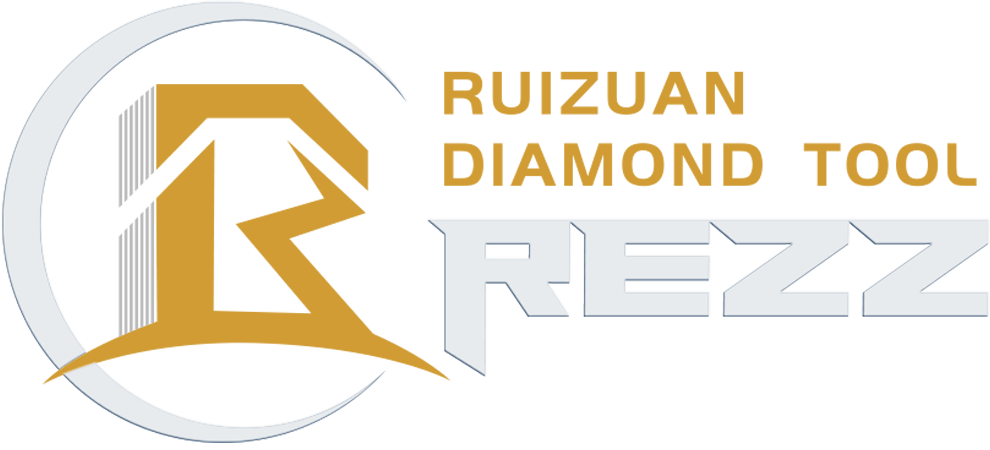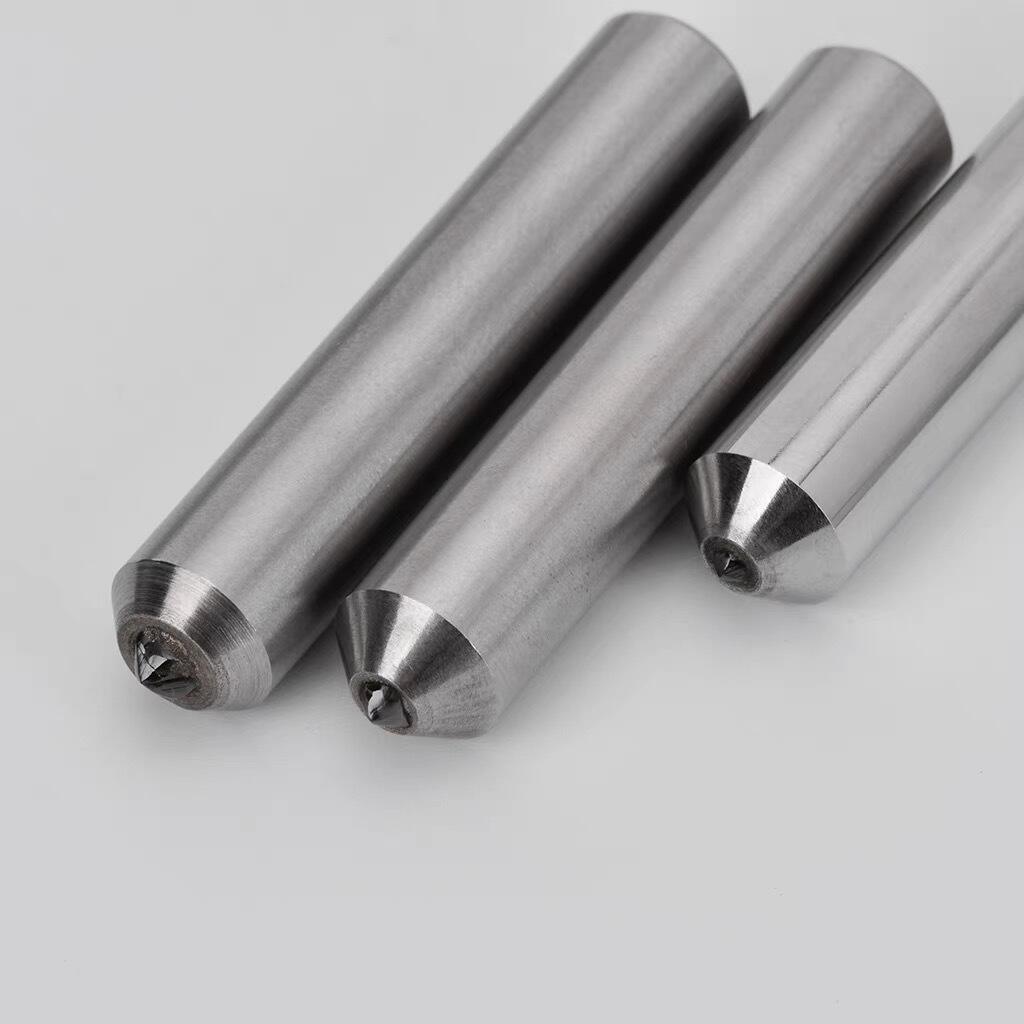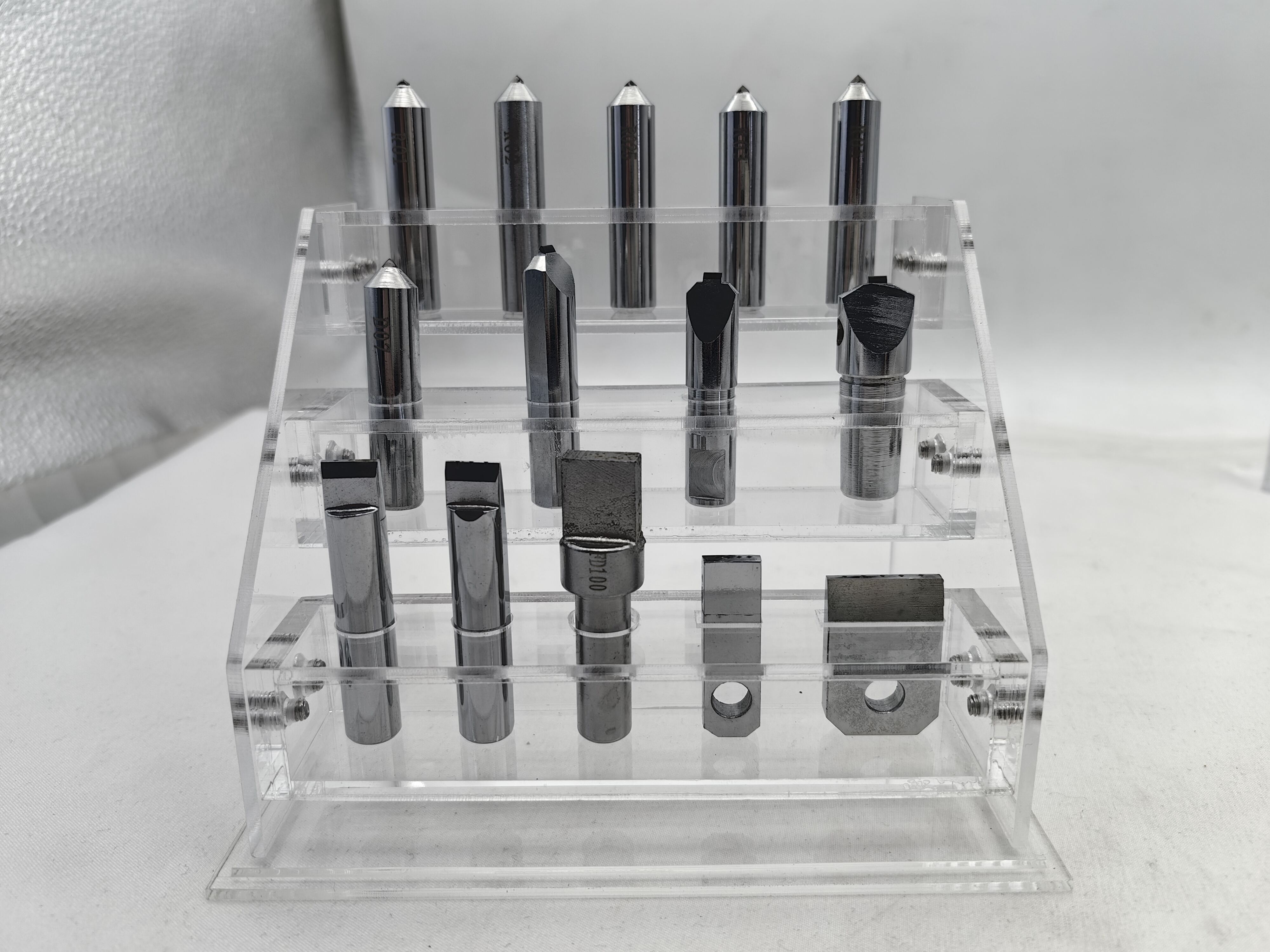
Diamond grinding wheels are the backbone of precision machining for hard materials like carbide, ceramics, and superalloys. However, prolonged use leads to abrasive grain dulling, chip loading, and geometric deviation, compromising surface finish and machining accuracy. At Zhengzhou Ruizuan Diamond Tools, we emphasize that regular dressing is not just a maintenance task—it’s a science that directly impacts tool life, productivity, and workpiece quality. This guide breaks down why dressing is essential, the tools involved, and proven techniques to optimize your grinding operations.
Why Dress a Diamond Grinding Wheel?
1. Restore Cutting Efficiency
Grain Attrition: Diamond grains lose sharpness after grinding, leading to increased friction and heat. Dressing exposes fresh abrasive edges, restoring the wheel’s cutting ability.
Chip Clogging: Soft materials like aluminum or gummy resins can adhere to the wheel surface, creating a glazed layer. Dressing removes this buildup, reviving the wheel’s self-sharpening properties.
2. Maintain Geometric Precision
Profile Wear: Grinding complex shapes (e.g., serrated edges, radii) causes uneven wheel wear. Dressing restores the wheel’s original geometry, ensuring tight tolerances.
3. Prolong Wheel Lifespan
Proper dressing reduces excessive stress on the bond, preventing premature grain loss or bond failure. A well-dressed wheel can last 20-30% longer than a neglected one in high-volume production.
Dressing Tools:
1. Diamond Dressing Rollers
Structure: Composed of natural diamond particles or PCD (Polycrystalline Diamond) embedded in a metal matrix, with diameters ranging from 20mm to 200mm.
Applications:
Mass Production: Ideal for CNC grinders in automotive and semiconductor industries, where high precision and repeatability are critical.
Complex Profile Dressing: Can replicate intricate shapes (e.g., involute gears, turbine blades) with micron-level accuracy.
2. Diamond Dressers (Single-Point & Multi-Point)
Single-Point Dressers:
Features: A single natural diamond tip (0.5-3mm in size) mounted on a shank.
Use Case: Manual or semi-automatic machines for basic truing and dressing. Suitable for small workshops or occasional dressing.
Multi-Point Dressers:
Features: Multiple diamond tips or a diamond segment (e.g., 5-10 grains) for faster material removal.
Use Case: Heavy-duty applications like grinding cast iron or tungsten carbide, where aggressive dressing is required.
Technical Note: For resin-bonded wheels, use a single-point dresser with a 10-15° approach angle to avoid damaging the fragile bond.
3. Diamond Dressing Pens
Design: Compact tools with a diamond tip (often MCD, Monocrystalline Diamond) for portable use.
Applications:
On-Machine Dressing: Quick touch-ups on grinders without disassembling the wheel.
Small Precision Wheels: Ideal for tools <50mm in diameter, common in medical device or micro-machining.



Dressing Methods: Matching Technique to Bond and Application
1. Truing by Turning
Process: The dressing tool (roller or single-point) moves linearly across the rotating wheel, cutting away the worn surface.
Bond Compatibility: Metal-bonded and ceramic-bonded wheels (high rigidity).
Parameters:
Speed: 10-30m/s (wheel) vs. 0.5-2m/min (dresser feed).
Depth: 5-20μm per pass for precision; up to 100μm for rough truing.
Example: Dressing a metal-bonded diamond wheel for grinding carbide inserts—achieves Ra <0.4μm surface finish after 3 passes.
2. Abrasive Dressing
Process: A dressing wheel (often aluminum oxide or CBN) grinds against the diamond wheel to remove material.
Bond Compatibility: Resin-bonded and hybrid-bonded wheels (softer bonds).
Advantages: Gentle on the wheel, suitable for delicate operations like optical lens grinding.
Ruizuan Tip: Use a CBN dressing wheel for resin-bonded diamond wheels to minimize heat and achieve uniform grit exposure.
3. EDM Dressing for Electroplated Wheels
Process: Electrode discharge machining erodes the metal bond (e.g., nickel in electroplated wheels), releasing dull grains.
Bond Compatibility: Electroplated and metal-bonded wheels.
Precision: Enables nano-level truing for ultra-precision applications like semiconductor wafer grinding.
Best Practices for Optimal Dressing Results
1. Dress Before and During Grinding
Pre-Grinding Dress: Remove 5-10μm of the wheel surface to eliminate storage wear.
In-Process Dress: Schedule dressing every 2-4 hours in high-load applications to maintain consistency.
2. Coolant Management
Use a high-pressure coolant system (5-20bar) to flush away dressing debris and cool the tool-workpiece interface.
For resin-bonded wheels, avoid water-based coolants with high pH (>9), as they may degrade the bond over time.
3. Tool Alignment and Balance
Ensure the dressing tool is aligned within ±0.01mm of the wheel’s axis to prevent uneven wear.
Balance the wheel dynamically if dressing removes >5% of its mass to avoid vibration.
Ruizuan’s Dressing Solutions: Engineered for Precision
Custom Dressing Tools: We offer tailor-made diamond rollers and dressers based on your wheel specs (e.g., diameter, bond type, grit size).
Dressing Simulation Software: Our in-house tool predicts dressing parameters (feed, depth) for optimal results, reducing trial-and-error.
Dressing is not a mere maintenance step—it’s a strategic process that unlocks the full potential of your diamond grinding wheels. At Zhengzhou Ruizuan Diamond Tools, we combine decades of abrasive expertise with cutting-edge tool design to ensure your machining operations achieve peak efficiency, precision, and profitability.
Copyright © Zhengzhou Ruizuan Diamond Tool Co.,Ltd. All Rights Reserved — Privacy Policy